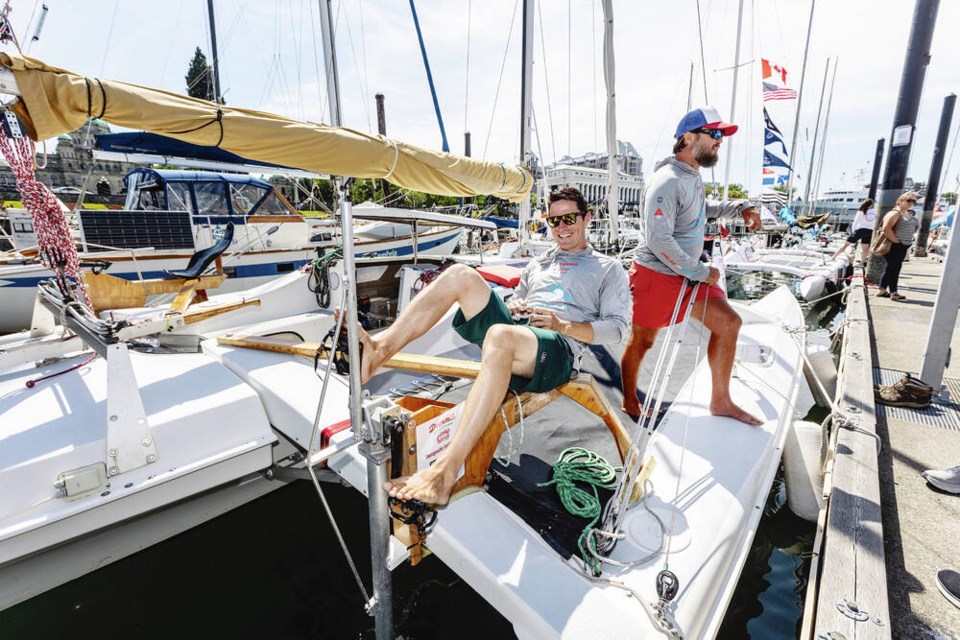Insufficient wind left what was likely the most unusual entry in this year’s 1,200-kilometre Race to Alaska sitting on the shore and unable to move for the first leg from Port Townsend, Washington, to Victoria.
Satchel Douglas — who was planning to do only that leg — couldn’t get his homemade wingfoil board going, said Jesse Wiegel, whose official title is “race boss.” “He requires at least 12 knots of wind for his vessel to go and he didn’t get that.”
Wiegel described the entry — one of 31 in the field — as similar to a paddleboard, but shorter and wider with a hydrofoil or “underwater wing” extending beneath it. “It’s kind of like kiteboarding,” he said.
The plan was for Douglas to hold an inflated wing and essentially act as the board’s mast, Wiegel said.
“When the board begins moving at a certain speed, the hydrodynamics enable the board to actually lift out of the water.”
But it wasn’t to be.
The only other entry that won’t be part of the group continuing to Alaska is a 24-foot boat that was using wind and pedal power.
It was one of about five vessels that got caught in a “really gnarly current” on the way to Victoria, but was the lone entry to be held up long enough to miss the 36-hour window to reach the Inner Harbour, Wiegel said.
It arrived in Victoria as a race gathering was underway at Swans, and once fellow racers heard it was there, they jumped into action.
“A big contingent of the racers ran down to the dock and congratulated the two men on the boat and cheered them, and insisted they come up to the party,” Wiegel said.
“They were welcomed with a huge round of applause — it was really beautiful. I’ve been told by all the racers that, even though they’re all on different boats throughout the race, after the thing is done and even during it they all feel like shipmates.”
All in all, the proving ground — as the Port Townsend to Victoria section is known — was less of an issue than it typically is, Wiegel said.
“It’s a real piece of water that can throw a lot at racers, and it can tell us as race organizers who has got what it takes to go further,” he said.
But for the first time in Race to Alaska history, he said, the proving ground “remained tame.”
On Wednesday, the public was able to visit the entrants at the docks in front of the Fairmont Empress Hotel.
A mass start is set for noon on Thursday — racers will gather on Government Street and sprint to their vessels, Wiegel said — and spectators are welcome.
“The public is hugely encouraged to come and witness that.”
All entries must have no engine. They’re vying for a top prize of $10,000 and a second prize of a set of steak knives.
The top human-powered vessel this year gets $1,000 for the first time.
Sailboats can finish in three or four days, while others can take considerably longer. Victoria kayaker Scott Macdonald is aiming for about 18 days.
People can track the racers via the event website at r2ak.com.
>>> To comment on this article, write a letter to the editor: [email protected]



